
views
X
Research source
A nebulizer is an electric machine powered by an outlet and plug or batteries. It turns liquid medication into a fine mist that is inhaled into the patient’s lungs by a mouthpiece of a facemask. This delivers the medicated mist and helps the patient breathe better.
Preparing to Use a Nebulizer
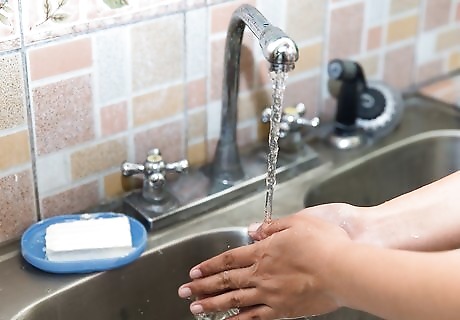
Wash your hands. Start by washing your hands for no less than 20 seconds with soap under running water. Rinse your hands and dry them off with a paper towel. Turn off the faucet using a paper towel.
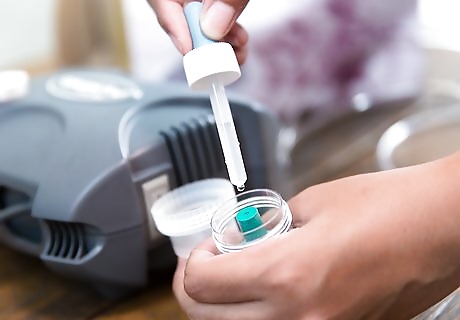
Place the medication into the nebulizer. Unscrew the top of the nebulizer cup and put the prescribed medication into the nebulizer. Many types of respiratory medications for nebulizer treatments come in pre-measured doses. If yours is not pre-measured, measure out the exact amount prescribed for one dose. Secure the top tightly to prevent the medication from spilling out. Don't forget to plug the air compressor into an electrical outlet if it is not battery operated. Medications that can be put in the nebulizer include inhaled beta-agonist and anticholinergics, inhaled glucocorticoids, and inhaled antibiotics. Other inhaled medications are available for the treatment of non-respiratory diseases. Not all drugs can be aerosolized. The jet, or pneumatic, nebulizer is the most common type. Newer nebulizers are designed to deliver the entire mediation during inhalation. Nebulizer performance can be affected by the nebulizer method, mechanism of aerosol formation, and drug formation. If you need instructions about how to use your nebulizer, talk to your doctor or respiratory therapist.

Attach the mouthpiece. Secure it to the nebulizer cup. Although different manufactures may have slightly different jet nebulizers, most mouthpieces will attach to the top of the nebulizer cup. Most nebulizers have mouth pieces instead of face masks, since masks can lead to facial deposits.

Connect the tubing. Attach one end of the oxygen tubing to the nebulizer cup. On most types of nebulizers, the tubing will connect on the bottom of the cup. Connect the other end of the tubing to an air compressor used for nebulizers.
Using the Nebulizer
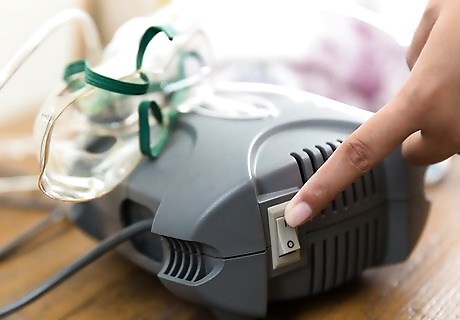
Turn on the air compressor and use the nebulizer. Put the mouthpiece into your mouth, above the tongue, and keep your lips sealed tightly around it. Inhale slowly and deeply in through your mouth so that all the medicine goes into your lungs. Exhale either through your mouth or nose. For adults, holding the nose closed can help ensure the medicine is inhaled through the mouth. Consider using an aerosol mask as an alternative to a mouthpiece for young children or people that are too ill to hold the mouthpiece. Aerosol masks attach to the top of the nebulizer cup. The mask comes in pediatric and adult sizes. Confirm the proper exhalation method. "After using my nebulizer for the first time, I wasn't sure if I should exhale through my mouth or nose. This article clearly states that exhaling, either way, is fine but that closing the nose can help ensure all medicine is inhaled through the mouth. Having this confirmation on the proper technique makes me feel confident I'm using my device correctly." - Isabella L. Gain visual guidance on setup. "When I first tried to use my nebulizer, I just couldn't figure out how to put the parts together properly. The manufacturer's instructions were vague and lacked images. Finding this article, with its step-by-step visual guide on assembling the cup, tubing, and mask, gave me the exact visual reference I needed. Now, the setup is smooth sailing!" - Brian C. Receive assistance akin to personalized training. "My husband and I were totally lost trying to assemble his new nebulizer with the unhelpful instructions included. But this article's clear text combined with photos on each component was as good as having a respiratory therapist right there guiding us through it. Even complex medical devices become approachable with this level of detailed, visual walkthrough." - Ann B. Explore integrative treatment options. "A friend suggested using a nebulizer to improve my breathing without medications. But as a fan of natural healing, I wasn't sure it was right for me. This article gave me helpful info not just on proper use, but on how nebulizers work to deliver herbal remedies. It opened my eyes to how this device works with holistic breathing treatments, too." - Maria S. We want to hear from you! Advice from our readers makes our articles better. If you have a story you’d like to share, tell us here.
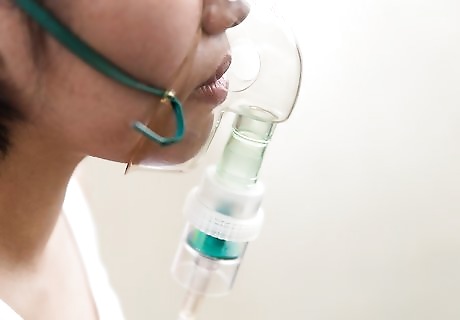
Continue to inhale the medication. Sit up and keep inhaling the medication until the mist stops. This usually takes about 10-15 minutes. Once all liquid is gone, the mist stops coming out. The nebulizer cup should be empty. Distract yourself by watching TV or listening to music. Set up an activity to occupy young children during the nebulizer treatment. Puzzles, books or coloring may help the child sit still for the length of the treatment. Ideally, hold the child in your lap since the child should be sitting straight up to receive the optimal dosage of medication.

Turn off the nebulizer and clean up. Be sure to unplug it from the outlet and detach the medicine cup and mouthpiece from the tubing. Wash the medicine cup and mouthpiece with warm soapy water and rinse them with water. Place the equipment on a clean towel to fully air dry. Make sure to do this after each treatment and daily. Don't wash the tubing. If it gets wet, replace the tubing. Also, don't put any parts of the nebulizer into a dishwasher to clean it because the heat can warp the plastic.
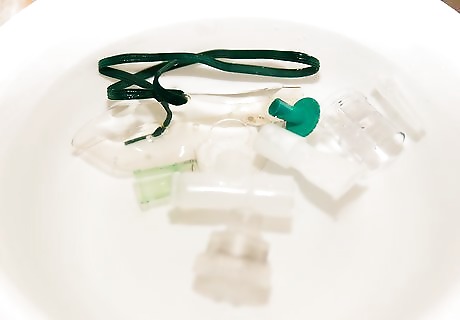
Disinfect the nebulizer once a week. To disinfect, always follow the manufacturer's guidelines. Soak all parts, except for the tubing, in one part white distilled vinegar to three parts hot water for one hour. Discard the solution. Rinse the parts, except for the tubing, in cold water and air dry them on a clean towel. After the parts are dry, store them in a clean area in the case. For cleanliness, if more than one person is needs a nebulizer, do not share equipment even if it is washed. Each person should use his or her own nebulizer.

















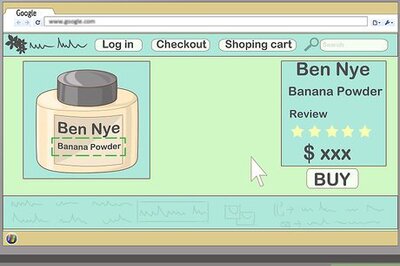
Comments
0 comment